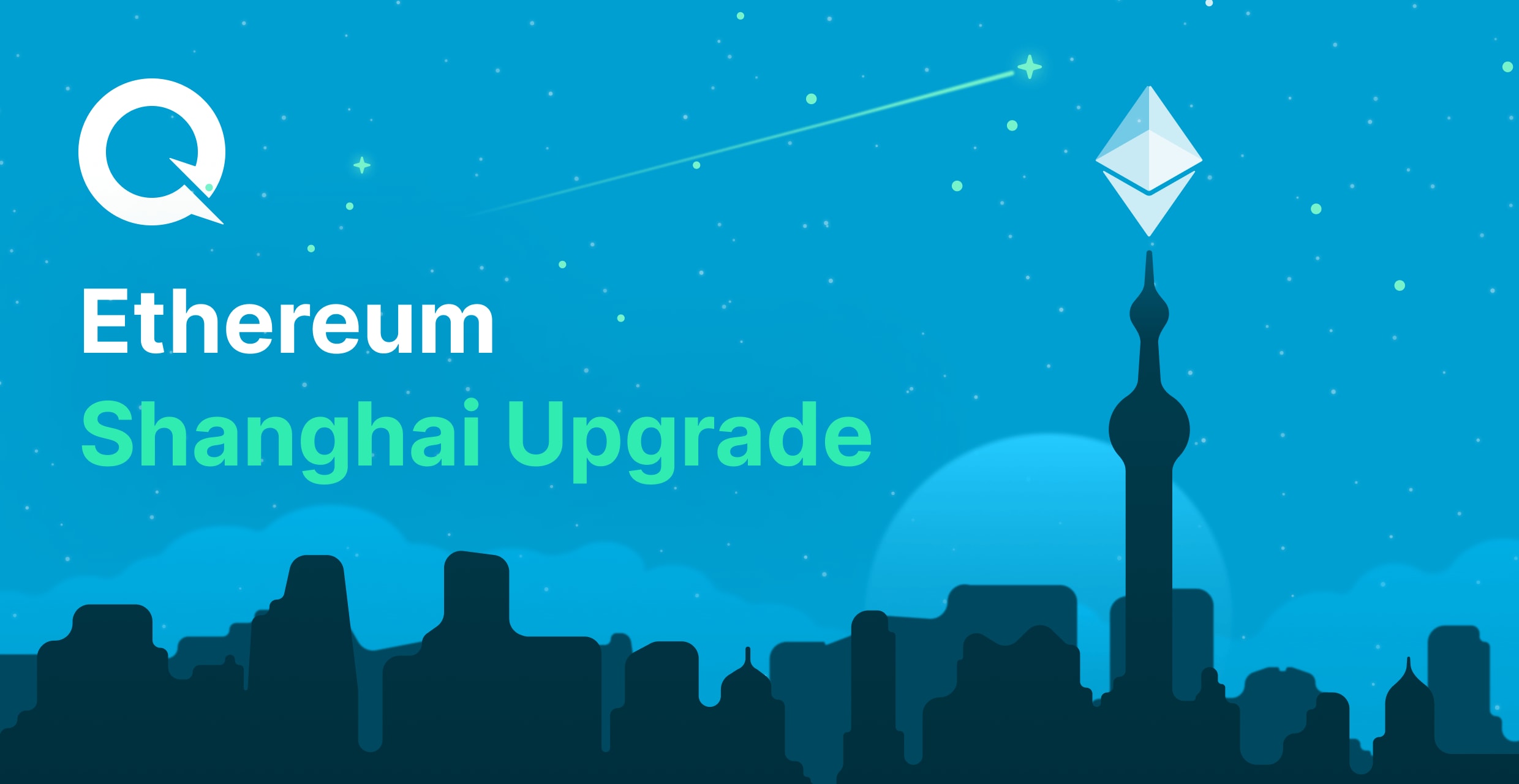Shanghai Upgrade
A dashboard To Help Monitor The Effects The Shanghai Upgrade Might Have On Ethereum Beacon Chain Deposits / Depositors.
What is the Shanghai Upgrade? The Shanghai Upgrade is part of Ethereum's ongoing evolution to Ethereum 2.0, a set of upgrades that aims to make the blockchain more scalable, secure, and sustainable.
Before getting to the details about the Shanghai Upgrade, we need to brush upon the basics about Ethereum a bit. The Ethereum blockchain is made up of two layers, which are the execution layer and the consensus layer. The former hosts all smart contracts and protocol rules, and the latter is where the validators are made sure to follow the protocol rules. Therefore, when Ethereum undergoes a comprehensive upgrade like the Merge or Shanghai, it entails both layers. The upgrades on execution layers are named after past host cities of Devcon, whereas the upgrades for the other layer are named after celestial objects.
This time, indeed, the upgrade on the execution layer is called Shanghai, while that on the consensus layer is named Capella (one of the biggest and brightest stars in the sky). Thus, the name of the whole Ethereum upgrade actually is Shapella, a combination of Shanghai and Capella. But most people are more familiar with the name Shanghai, which is technically not a wrong name, so we will call it the Shanghai Upgrade for the sake of simplicity and familiarity.
The Shanghai Upgrade is a hard fork that will implement five Ethereum Improvement Proposals (EIPs) as follows:
-
EIP-4895: Enabling validators to fully or partially withdraw staked ETH
-
EIP-3651: Reducing gas costs for validators and block builders when they receive fees for maintaining the blockchain
-
EIP-3855: Lowering gas costs for developers
-
EIP-3860: Putting a limit on developer gas costs in specific cases
-
EIP-6049: Putting a limit on developer gas costs in some other situations
These EIPs were tested and selected during the Shandong testnet, which was launched in October 2022 to prepare for the Shanghai Upgrade on the mainnet. Among these five, EIP-4895 is considered the most important and highly anticipated.
The Shanghai Upgrade was supposed to go live in March 2023, but the release time was pushed back to 22:27:35 UTC on April 12 due to delays during one of the testnet executions.
After the official implementation of the Shanghai Upgrade, Ethereum will allegedly complete the remaining work of the Merge and transition into a fully functioning PoS blockchain.
Since Ethereum introduced the PoS model on the Beacon Chain in 2020, people have been able to stake ETH and accrue rewards for validating the network, but withdrawing the staked and accrued ETH has not been possible. That leads to the birth of liquid staking, the act of staking or delegating a small amount of ETH to validators in order to receive a different token that represents the staked ETH and can be used for other purposes.
Everything is going to change after the Shanghai Upgrade and validators will be able to withdraw their ETH.
It is estimated that there is approximately 17.9 million staked ETH on Ethereum, which represents roughly 15% of the total circulating supply and is priced at around $32 billion at the current price. EIP-4895 will certainly lead to the release of a portion of those staked ETH tokens to the market, increasing the circulating supply of ETH.
And that brings me to the reason for this analysis. A dashboard to help investors and the crypto community at large monitor every aspect of staking associated with the Shanghai Upgrade.

- To be able to come up with a complete analysis I had to go beyound flipside to get the contract addresses of respective staking entities.
- I used the
ethereum.core.fact_tracestable to get times when a deposit was made to the beacon deposit contract address0x00000000219ab540356cBB839Cbe05303d7705Fa. - This dashboard is divided into 6 tabs. The first one is for Staking as a Service (Pool Staking) category, the second is the Liquid Staking category, the third is for investors staking through Centralize Exchanges.
- The Total Tab is all the categories combined to give a complete picture of the categories in comparison with each other.
- The Search Tab is a tool mainly for investors who have bought liquidity tokens one time or the other and want to view their transactions.
- https://ethereum.org/en/staking/saas/
- https://ethereum.org/en/staking/pools/
- https://www.bitget.com/en/academy/article-details/The-Shanghai-Upgrade-Beyond-the-Sea-of-New-Opportunities-for-Ethereum-Users https://ethereum.org/en/staking/
- https://www.rated.network/?network=mainnet&view=pool&timeWindow=1d&page=1
- https://www.stakingrewards.com/
- https://www.coingecko.com/learn/what-is-liquid-staking-liquid-staked-derivatives-you-need-to-know
- https://etherscan.io/address/0x00000000219ab540356cbb839cbe05303d7705fa